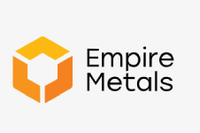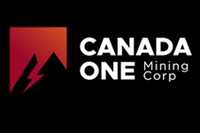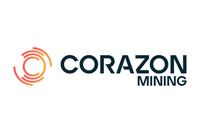Why is Thomson Reuters GFMS Predicting a $7,073 Incentive Copper Price?
Thomson Reuters GFMS predicts that the copper price will average $5,795 per tonne for 2015. However, the incentive price is anticipated to be much higher, at $7,073 per tonne.
For more information on copper prices, please see A Brief Overview of the Copper Price Today.
Last week, Resource Investing News shared thoughts on the copper price from Bruce Alway, base metals mining manager at GFMS.
In its annual Copper Survey, Thomson Reuters GFMS isn’t overly optimistic for the metal in the near term, and predicts that the copper price will average $5,795 per tonne for 2015, or 12 percent lower than last year.
However, the incentive price — or the price needed to incentivize new mine development — is anticipated to be much higher, at $7,073 per tonne. Alway said that the red metal could rise to that level in the next two to three years.
Why the high price?
Explaining that prediction, Alway drew attention to the “time lag” between when prices rise, investment increases and new mines come online. “Obviously there’s a near-term growth in supply because new mines take four, five, six years to bring onstream,” he said, suggesting that the space is now halfway through the effects of a price run up.
However, with the low copper price, the market is now seeing the opposite effect. “For the last two years, the incentive price has been higher than the copper price, so there’s no incentive to build new mines,” Alway said. “If you look after 2018, there’s not much [supply] coming on.”
That low price scenario is due to a number of factors, not least of which is weakening demand growth from China. However, Alway believes it’s mostly a glut of supply coming online that’s driving things.
In any case, the scenario puts the market in a bit of a bind. Alway stated that some larger copper-mining companies, such as Codelco and Southern Copper (NYSE:SCCO), can and are investing “counter cyclically” — in other words, investing more in development while the copper price is still low.
However, most companies have a difficult time convincing investors to allow large amounts of capital to be sunk into new development when metals prices are low.
Difficult predictions for a cyclical market
Those points raise the question of why, in a cyclical market, copper companies are interested in moving forward with projects that are only economic at high prices, or when the cycle is at its top. Speaking to the large amount of investment in projects several years ago, Alway suggested that it’s always difficult to predict what will happen in the market years in advance.
“At the time, 10 to eight years ago, this looked like a supercycle that was never going to end,” he explained. “All the analysts were bullish, metals prices were only moving one way, you had China obviously growing in terms of the infrastructure build and you had lots of graphs showing that [for] all of the BRICs, the metal intensity on a per-capita basis was very low.”
In other words, if countries such as Brazil and India were to follow China’s growth path, there would have been an endless supercycle.
“You can say producers got it wrong, but these are long lead times. It’s hard to predict,” Alway stated.
Rising costs and grassroots exploration
Beyond that, he added that it’s simply becoming more difficult to build new mines.
“When you think about it, the capital [intensity] for projects is actually going up, not down,” he said, explaining that arguably “the best projects have already been developed.” For example, projects being built in new and sometimes remote locations require big, expensive infrastructure builds.
Certainly, Alway agrees that part of the problem is a relative lack of grassroots exploration. “Within the known copper belts, a lot of the best assets have been developed,” he said, noting that the cheapest, easiest-to-find assets in known areas have largely already been found. Those still in the ground tend to be larger, low-grade projects that are inherently more capital intensive.
In the same vein, he noted that the average grade for copper mines has dropped dramatically. There’s also an increasing number of projects being developed despite more complex mineralogy, such as high levels of arsenic.
“In broad terms, if you don’t spend money on grassroots exploration, you won’t find the next big copper province,” Alway said.
Time will tell
To be sure, the copper price has a big jump to make if it’s to close the gap between the current price and the incentive price for new supply. Alway doesn’t see the $7,703 incentive price predicted by Thomson Reuters GFMS coming down in the next few years either, and is calling for copper to average $6,600 per tonne in 2016 and $7,500 in 2017.
Certainly, the copper price has seen a bit of a spike in recent weeks, getting closer to $3 per pound than it’s been all year. While Alway is still predicting more downside for copper before its price rises later in 2015, it’s fair to say there’s hope on the horizon for copper bulls.
For more information or to download a copy of the survey, visit Thomson Reuters GFMS Annual Surveys.
Securities Disclosure: I, Teresa Matich, hold no direct investment interest in any company mentioned in this article.
Editorial Disclosure: The Investing News Network does not guarantee the accuracy or thoroughness of the information reported in the interviews it conducts. The opinions expressed in these interviews do not reflect the opinions of the Investing News Network and do not constitute investment advice. All readers are encouraged to perform their own due diligence.
Related reading:
Bruce Alway of Thomson Reuters GFMS Talks Copper Prices




